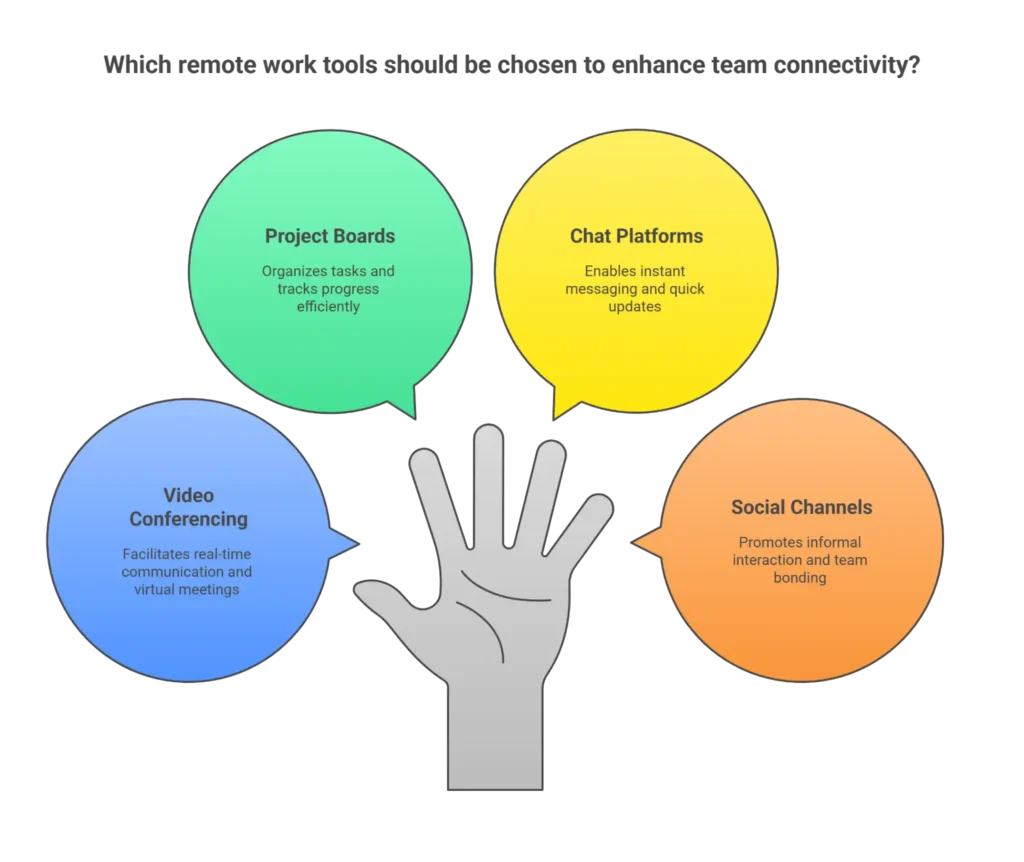Don’t have the time to read?Listen here instead or save to your Spotify playlist. |
You’ve built your remote team with care—but despite flexible schedules and modern tools, a disconnect lingers. In fact, 27% of remote or hybrid employees often feel isolated, and another 14% always do. That quiet loneliness can quietly dull morale and dent productivity.
“Connection isn’t optional; it’s the backbone of engagement in dispersed teams. It’s not just theory; it’s the industry pulse.” ~ Ruffy Galang, CEO and Co-Founder of Remote Employee
In this blog, we’ll guide you step by step through precisely how to make remote employees feel connected so your team thrives in unity and purpose.
1. How to Make Remote Employees Feel Connected: Start with Intentional Onboarding
First impressions matter more when they happen through a screen.
You can’t rely on watercooler small talk. Instead, design a warm, structured virtual welcome: assign a buddy for cultural and practical introductions. Set clear communication norms and introduce your tools and values from day one.
That solid first impression lays the foundation for belonging.
2. Effective Remote Team Working Begins with Consistent Communication
To foster effective remote team working, you need more than Slack pings; you need rhythm.
Mix synchronous check-ins with asynchronous updates. Hold weekly video stand-ups that focus on connection, not just execution. Encourage open voice channels where team members can raise ideas, or just chat. You’ll build rhythm without micromanaging.
Discover How to Bring Remote Teams Together for Greater Morale
Happy employees are productive employees.
3. How to Keep Remote Teams Connected Through Rituals and Culture
Rituals anchor connection. Schedule recurring virtual coffee breaks or casual hangouts—no agenda, just genuine conversation. Celebrate birthdays, project milestones, and “wins of the week.” Share fun polls or pet-picture weekends.
Culture isn’t transmitted through files, it’s lived. These rituals remind your team you’re “with” them, not just assigning tasks.
4. How to Work with Remote Teams by Using the Right Tools
The right tools can either glue your team together or tether them to overwhelm. Choose intuitive, integrated platforms: video conferencing (Zoom, Teams), project boards (Trello, Asana), chat (Slack), and water-cooler bots or social channels.

Train everyone gently to use tools without drowning in notifications or confusion. Empower your people, don’t daunt them.
| More articles you might like: |
5. How to Bring Remote Teams Together with Engaging Activities
Icebreakers shouldn’t feel forced; they should be playful.
Organize virtual trivia, show-and-tell of personal hobbies, or a “room-tour” game. Host a remote book club, learning session, or skill exchange. If possible, plan occasional in-person or hybrid retreats to enhance team collaboration and productivity.
These shared experiences (real or virtual) bond people in ways that email never could.
6. How to Make Remote Teams Feel Connected with Leadership Support
As a leader, your tone sets the temperature. Hold regular one-on-one check-ins that go beyond task lists; ask how people are doing, personally.
Share what you’re learning, including mistakes. Be transparent and accessible. That empathy makes you human, not an avatar on a screen, and is essential for proper connection.
Quick Reference Guide to Connection Strategies
| Focus Area | Action Step | Benefit |
|---|---|---|
| Onboarding | Assign virtual welcome buddy | Early sense of belonging |
| Communication | Weekly mixed-format check-ins | Rhythm and transparency |
| Rituals & Culture | Virtual coffee + celebrations | Cultural cohesion |
| Tools | Curated, easy-to-use platforms | Collaboration without overwhelm |
| Team Engagement | Gamified activities + remote retreats | Bonding and shared experience |
| Leadership Empathy | Frequent one-on-ones + transparency | Trust-building |
| Flexibility & Inclusion | Overlap hours + autonomy | Work-life harmony |
| Feedback & Recognition | Shout-outs + pulse surveys | Feeling seen and appreciated |
7. Working Effectively with Remote Teams by Honoring Flexibility
Flexibility isn’t just policy, it’s respect.
Acknowledge different time zones, family demands, and work rhythms. Offer core “overlap hours” instead of rigid schedules. Provide autonomy to plan tasks.
Recognizing that “life” happens keeps your team engaged and shows you value them as humans, not output machines.
8. How to Keep a Remote Team Connected Through Feedback and Recognition
Connection thrives on acknowledgement. Send shout-outs in team channels, celebrate wins (big and small), and invite feedback regularly.
Use quick pulse surveys or feedback polls to ask what’s working and what’s not. Acting on insights shows you’re listening, and that makes your team feel seen.
Real Benefits of Connection
Well-connected teams aren’t just happier; they’re more productive and innovative.
For example, 73% of employees who engage in collaborative work report improved performance, and 60% say it sparks their innovation. That’s not fluff, it’s proof that connection is both human and strategic.
Learn How to Make Remote Teams Feel Connected with Remote Employee
You’ve seen how every touch-point, from onboarding to recognition, builds a tangible connection. This intentional weaving of communication, rituals, tools, and empathy transforms scattered individuals into a cohesive, vibrant team.
| Trusted Remote Staffing Solutions Near You | |
|---|---|
| • Recruitment Process Outsourcing Providers | • Borderless Hiring |
| • Outsourcing to the Philippines | • Staffing BPO |
Want to truly strengthen your remote workforce?
Contact Remote Employee today for a free consultation and discover how we can help you build high-performing, deeply connected remote teams.









